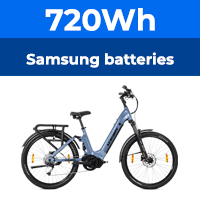This is why the Tongxin is out on its own. The resistance is near negligible. A year or so ago, when I was between normal bikes and Tongxin controllers I rode my bike with Tongxin in the front hub but without power on a couple of long trips. I didn't bother to change the front wheel as there was no need! I don't believe any other motors (yet) come close to that.
This means that it is viable to use a Tongxin purely as a hill-assist motor, with the rider happily doing the work on the flat or downhill. The Nano and Cytronex applications have illustrated that, both having their fervent supporters despite, on paper, not having outstanding specs.
During the Ching Challenge ride on Wednesday, there was a long (c.15 mile) gentle downhill ride alongside a river. Nick on his Cytronex and me with my Tongxin were able to do this stretch comfortably at 16-21 mph without using any power, while the Ezee bikes needed to use power to attain those speeds because they had greater motor drag. It's things like that which explain why the Nano and Cytronex are able to report such high ranges from small batteries.
This means that it is viable to use a Tongxin purely as a hill-assist motor, with the rider happily doing the work on the flat or downhill. The Nano and Cytronex applications have illustrated that, both having their fervent supporters despite, on paper, not having outstanding specs.
During the Ching Challenge ride on Wednesday, there was a long (c.15 mile) gentle downhill ride alongside a river. Nick on his Cytronex and me with my Tongxin were able to do this stretch comfortably at 16-21 mph without using any power, while the Ezee bikes needed to use power to attain those speeds because they had greater motor drag. It's things like that which explain why the Nano and Cytronex are able to report such high ranges from small batteries.







